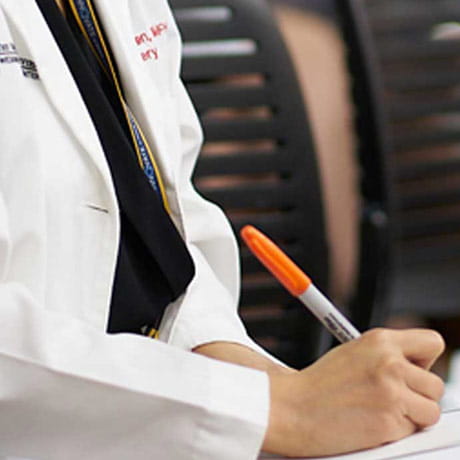
Curriculum
The Ohio State University Wexner Medical Center is among the world’s most comprehensive public research universities and our honors show it. Learning in a dynamic, multidisciplinary, academic setting is part of Ohio State’s unique residency experience. The Department of Physical Medicine & Rehabilitation (PM&R) is part of Ohio State’s world-class Neurological Institute. Our residents learn from and collaborate with highly accomplished faculty in state-of-the-art facilities. Here, you’ll gain valuable experience, insights and relationships that will endure throughout your career.
The Office of Graduate Medical Education and the Department of Physical Medicine and Rehabilitation are proud to share that our residency program is considered one of the top 25 programs in the nation for PM&R, according to Doximity’s 2022-2023 Residency Navigator. This standing is based upon a national poll conducted by Doximity assessing the reputation of accredited residency programs among certified physicians.
The primary mission of the Physical Medicine and Rehabilitation Residency Training Program at he Ohio State University Wexner Medical Center is to train physicians to become outstanding physiatrists capable of providing a broad range of high-quality care to their patients and who will become leaders in the field of PM&R.
We aim to provide the highest caliber of clinical, research and procedural education in a supportive setting free from harassment or intimidation.
We aim to cultivate passion and enthusiasm for work and the field of PM&R by focusing on resident wellness and balance.
We aim to embody the multidisciplinary spirit of PM&R by cultivating interdisciplinary cohesion and respect.
We aim to adopt practices to create a culture of inclusivity wherein all individuals feel welcomed and respected, regardless of race, gender, orientation, ethnicity, religion or background.
We aim to identify and reduce the effects of health inequity on our patient population and integrate social determinants of health in our clinical decision-making.
The overall objectives of the program are to train physicians to become competent, well-rounded, independent physiatrists who excel in: